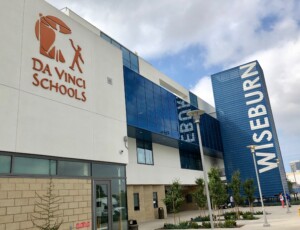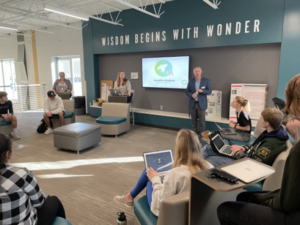ConnectEd Takes Linked Learning National

Frustrated by large-scale reform? Think urban high schools are beyond repair? ConnectEd is a network of 30 districts in California, Michigan, Texas, Wisconsin, Illinois, Ohio and New York that are making pretty good progress with a bundle of common sense reforms.
ConnectEd develops long-term (usually grant funded) district partnerships to help school district leaders:
- Clarify what graduates need to know and be able to succeed in college, career and life;
- Design and implement quality college and career pathways;
- Strengthen capacity for effective learning, teaching and leading; and
- Construct equitable and sustainable district and regional systems.
The program, called Linked Learning, was designed by the staff of the James Irvine Foundation and launched with a $100 million grant awarded to nine California districts including Antioch, Long Beach, Los Angeles, Montebello, Oakland, Pasadena, Porterville, Sacramento City and West Contra Costa.
An SRI evaluation showed that students participating in certified Linked Learning pathways were more likely to graduate from high school, move to postsecondary learning and be ready for a modern workplace. What do students think of the program? Listen to these California students describe how Linked Learning is improving their high school experience and guiding their future plans:
Scaling National Pathways
Now that the original grant program is over, the ConnectEd team is using a combination of fees and grants (the latter preferred) to scale the work nationally. And they’ve assembled a super talented team to support the work. We spoke with two of these team members: Brad Stam and Jennifer Lutzenberger Phillips.
In the orbit of Central Park East, Brad Stam’s early teaching career was influenced by Debbie Meier and Ted Sizer. He was CAO in Oakland before joining ConnectEd as COO seven years ago. Jennifer Lutzenberger Phillips started her career advising students at the Met, flagship of Big Picture Learning. She served as VP of Teaching and Learning at Envision Schools before joining ConnectEd. These two have serious education pedigrees and reform chops.
Stam sees that the critical elements of a ConnectEd partnership include rigorous college prep curriculum integrated with career and technical education and combined with academic and social-emotional supports. The goal is graduates who are “College, career and community ready,” said Stam.
ConnectEd is a Berkeley-based nonprofit intermediary organization formed to provide support services to districts implementing Linked Learning. ConnectEd has a staff of about 25 with approximately as many consultants.
Unlike other networks, ConnectEd doesn’t work with districts on new or branded schools–just big high schools striving to be what Stam called “learning-focused, equity-based.”
Phillips thinks the industry links that ConnectEd helps to create promote learning, integration and collaboration. Industry defined competencies promote a performance-based learning environment that gets learners ready for workplaces.
ConnectEd partner districts develop their own graduate profiles through a stakeholder-driven process.
“The relationships within and between school districts were the most surprising and perhaps most valuable thing about the network,” said Stam. “The ConnectEd team is very intentional about creating vertical [K-12] district teams.”
Twice annually, partner districts gather to share lessons learned. Stam and Phillips see a sense of reciprocal accountability form between districts. They enjoy seeing role-alike connections form across districts. “These relationships are often sustained affiliation after the grant,” added Stam.
Cloud-Based Pathways
ConnectEd Studios is a digital environment that supports the design and implementation of pathways. It facilitates the calibration of student assessment and a conversation about student work. District partners of EdLeader21 and some New Hampshire districts use the platform to promote deeper learning.
“Districts don’t need top down mandates,” said Stam. “They need support and room to experiment.” Phillips added that placing industry partnerships at the center of the work allows teachers to be reflective about the workplace–theirs and the ones students are headed for.
Why is it working? Stam thinks the key is a focus on student-centered, meaning-focused, equity-directed partnerships. “Learning together is a powerful force.”
For more, see:
- Getting At-Risk Students on a Path to College
- Getting Smart Podcast | AVID: An Integrated Approach to College Readiness
- 10 Strategies for Strengthening Academic and Social Support
Stay in-the-know with all things EdTech and innovations in learning by signing up to receive the weekly Smart Update.






0 Comments
Leave a Comment
Your email address will not be published. All fields are required.